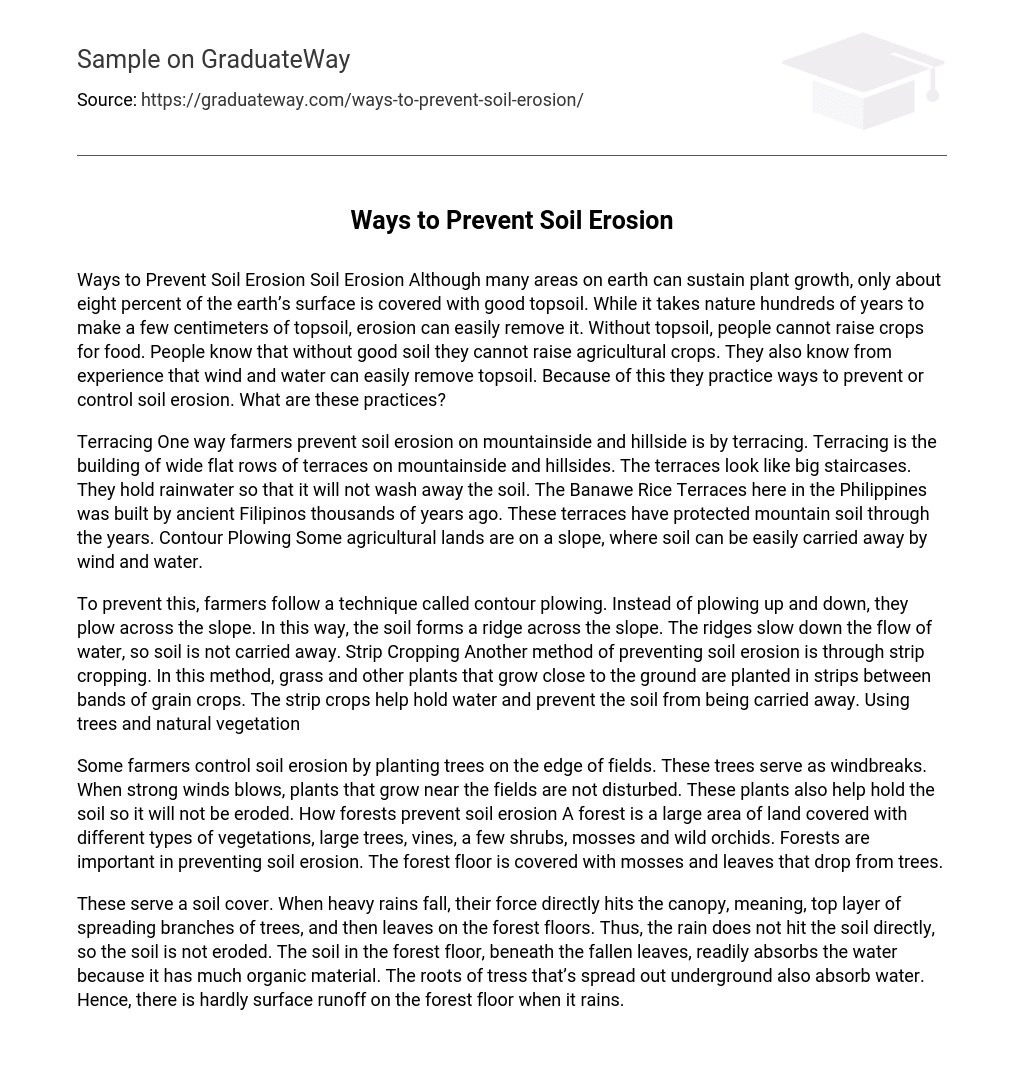Soil Erosion
Although many areas on earth can sustain plant growth, only about eight percent of the earth’s surface is covered with good topsoil. While it takes nature hundreds of years to make a few centimeters of topsoil, erosion can easily remove it. Without topsoil, people cannot raise crops for food. People know that without good soil they cannot raise agricultural crops. They also know from experience that wind and water can easily remove topsoil. Because of this they practice ways to prevent or control soil erosion. What are these practices?
Terracing
One way farmers prevent soil erosion on mountainside and hillside is by terracing. Terracing is the building of wide flat rows of terraces on mountainside and hillsides. The terraces look like big staircases. They hold rainwater so that it will not wash away the soil.
Terraces here in the Philippines was built by ancient Filipinos thousands of years ago. These terraces have protected mountain soil through the years. Contour Plowing Some agricultural lands are on a slope, where soil can be easily carried away by wind and water. To prevent this, farmers follow a technique called contour plowing. Instead of plowing up and down, they plow across the slope. In this way, the soil forms a ridge across the slope. The ridges slow down the flow of water, so soil is not carried away.
Strip Cropping
Another method of preventing soil erosion is through strip cropping. In this method, grass and other plants that grow close to the ground are planted in strips between bands of grain crops. The strip crops help hold water and prevent the soil from being carried away.
Using trees and natural vegetation
Some farmers control soil erosion by planting trees on the edge of fields. These trees serve as windbreaks. When strong winds blows, plants that grow near the fields are not disturbed. These plants also help hold the soil so it will not be eroded. How forests prevent soil erosion A forest is a large area of land covered with different types of vegetations, large trees, vines, a few shrubs, mosses and wild orchids. Forests are important in preventing soil erosion. The forest floor is covered with mosses and leaves that drop from trees.
These serve a soil cover. When heavy rains fall, their force directly hits the canopy, meaning, top layer of spreading branches of trees, and then leaves on the forest floors. Thus, the rain does not hit the soil directly, so the soil is not eroded. The soil in the forest floor, beneath the fallen leaves, readily absorbs the water because it has much organic material. The roots of tress that’s spread out underground also absorb water. Hence, there is hardly surface runoff on the forest floor when it rains.





